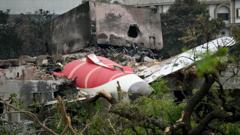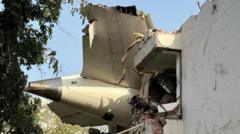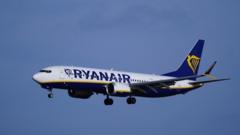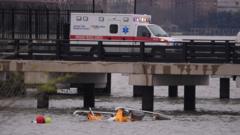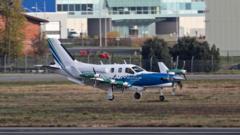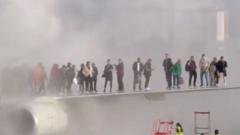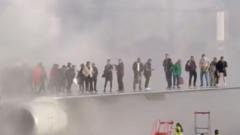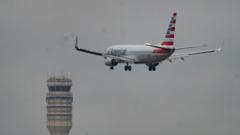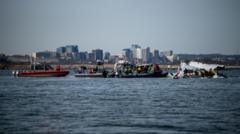Last week's communication failure and its implications raise significant concerns over air traffic safety and staffing shortages at one of the country's busiest airports.
Newark Airport Air Traffic Controllers Face Communication Crisis, Hundreds of Flights Affected
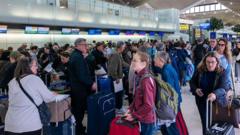
Newark Airport Air Traffic Controllers Face Communication Crisis, Hundreds of Flights Affected
Air traffic controllers' brief loss of communication leads to hundreds of flight delays, cancellations, and trauma leave.
The Newark Liberty International Airport experienced a critical incident on April 28, when air traffic controllers briefly lost contact with planes, rendering them "unable to see, hear, or talk" to aircraft under their supervision, as reported by a union representative. This distressing event resulted in multiple employees taking trauma leave, which significantly contributed to hundreds of flight delays and cancellations, with over 150 cancellations alone reported on a recent Monday, according to FlightAware data.
The airport, which serves as a major hub for air travel in New York, has been beleaguered by staffing shortages in the weeks leading up to this incident. The Federal Aviation Administration (FAA) corroborated the situation, indicating that its aging air traffic control system is adversely affecting workforce morale and functionality. While confirming that controllers took leave following the incident, the FAA lamented its inability to quickly replace the affected staff, emphasizing ongoing training for incoming controllers to manage this busy airspace effectively.
This latest crisis follows criticism of air traffic control operations at Newark. United Airlines recently announced the cancellation of 35 flights per day because of the airport's operational limitations. United's CEO Scott Kirby outlined that technology failures experienced by FAA air traffic controllers have resulted in numerous diverted flights alongside hundreds of delayed and cancelled flights. He further pointed out that staffing levels have been worsened by over 20% of controllers reportedly leaving their positions, further straining operational capabilities.
In response to the recent turmoil, the National Air Traffic Controllers Association revealed that employees were taking leave as outlined in provisions for those experiencing workplace trauma. However, the union did not disclose how many controllers were affected or the duration of the communication loss.
The unsettling events at Newark coincide with the US Department of Transportation's recent announcement of initiatives aimed at increasing the number of FAA air traffic controllers. The agency has committed to hiring at least 2,000 controllers this year as part of their effort to ensure a sufficient and well-trained workforce. Following a tumultuous hiring process initiated by the previous administration, the FAA aims to enhance the recruitment and retention of highly qualified professionals in the aviation industry.
The airport, which serves as a major hub for air travel in New York, has been beleaguered by staffing shortages in the weeks leading up to this incident. The Federal Aviation Administration (FAA) corroborated the situation, indicating that its aging air traffic control system is adversely affecting workforce morale and functionality. While confirming that controllers took leave following the incident, the FAA lamented its inability to quickly replace the affected staff, emphasizing ongoing training for incoming controllers to manage this busy airspace effectively.
This latest crisis follows criticism of air traffic control operations at Newark. United Airlines recently announced the cancellation of 35 flights per day because of the airport's operational limitations. United's CEO Scott Kirby outlined that technology failures experienced by FAA air traffic controllers have resulted in numerous diverted flights alongside hundreds of delayed and cancelled flights. He further pointed out that staffing levels have been worsened by over 20% of controllers reportedly leaving their positions, further straining operational capabilities.
In response to the recent turmoil, the National Air Traffic Controllers Association revealed that employees were taking leave as outlined in provisions for those experiencing workplace trauma. However, the union did not disclose how many controllers were affected or the duration of the communication loss.
The unsettling events at Newark coincide with the US Department of Transportation's recent announcement of initiatives aimed at increasing the number of FAA air traffic controllers. The agency has committed to hiring at least 2,000 controllers this year as part of their effort to ensure a sufficient and well-trained workforce. Following a tumultuous hiring process initiated by the previous administration, the FAA aims to enhance the recruitment and retention of highly qualified professionals in the aviation industry.

